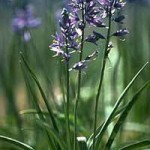Speckled Fish People: First Root Ceremony
Welcome back! I want to share with you about the First Root Ceremony of the Sinixt or Lakes People of Northeast Washington State. When I was editing for my up-and-coming book Heart of Passion, my editor wanted more cultural pieces woven in the tapestry of my story like the colorful hues the Native women entwine in their basketwork. A bit here and there is all she asked for. So I seized my box of Native resources off the shelf and blew off the dust. I began to thumb through some printed off material I had requested from the Colville Confederated Tribes for my son’s history project when they were still in high school.
My eyes were suddenly fixated to the words: First Root Ceremony. A few pages into chapter one of my manuscript I noticed something was missing. How could I have missed it? I was so obsessed with setting the scene up for a horse wreck, I forgot the most important piece––the Native Culture. A feeling of emptiness overcame me like an Indian village minus the sound of children playing and laughing. I had been weaving the season and setting of the village with white snow-like hues of a mid-March day in 1856. I horse race was about to begin just as an unexpected snow storm crowded in.
The wind and snow attacked the Indian Village as it spun off the Columbia River. Its bitter fingers robbing heat from the tule-mat pit homes. Mountains of pine and fir were covered in a blanket of white. As I read along I could not hear the children in the village laughing. Readers could see the village, smell the burning larch, and feel the Natives’ bodies shiver in the frigid air. There were only colors of white, brown, and yellow. Where were the blues, reds, and oranges?
What should the villagers be doing this time of year? They were a semi-nomadic people. What was next? Gathering food? Mending fishing nets? Preparing for what? Ah, yes, there it is: The First Root Ceremony. I could hear a child or two giggling in the distance. I had forgotten about this ceremony. As I read on a familiar feeling crept into my being. Elders had come into the school and shared their roots and stories with the students and staff. They showed us all their tall, thin root diggers traditionally made of a hard wood such as willow or Saskatoon Berry.
Women used to purify themselves by sweating in a small dome lodge made of woven tule-mats covering a willow frame. This was a time to honor and thank the Creator for the blessings bestowed upon them. The ceremony occurred after the first roots were harvested. The women would prepare the roots for the ceremonial meal. The roots of bitterroot and camas were the main meal along with venison.
Sacred woven tule-mats were used during the root festival feast. These mats were used only for the ceremony and placed on the ground as a symbol for the gathering of roots from the earth. Most roots were baked in a pit of heated stones for two to three days. They were covered with leaves to keep in the moisture. There will be more on the specifics of root digging and preparation in a future blog post.
What ceremonies are dear to you in your culture or with your family? What are you most thankful for?
Haiku poem: First Root Ceremony
Thank you Creator
For the food you provide us
Honor goes to You
Lakes Language as taught to me by Elder Marguerite Ensminger as seen in Change of Heart by Carmen Peone.
Sinixt or Sinyekst Bull Trout or Speckled Fish People
Sin- ikes-t
Chohuhloosa Camus
Cho (rhymes this Chloe)- huh (blowing sound from the back of the throat) – loosa
Spupaleena Rabbit – The main girl character in The Heart Trilogy.
Spup-a-leena (Like Tina)

